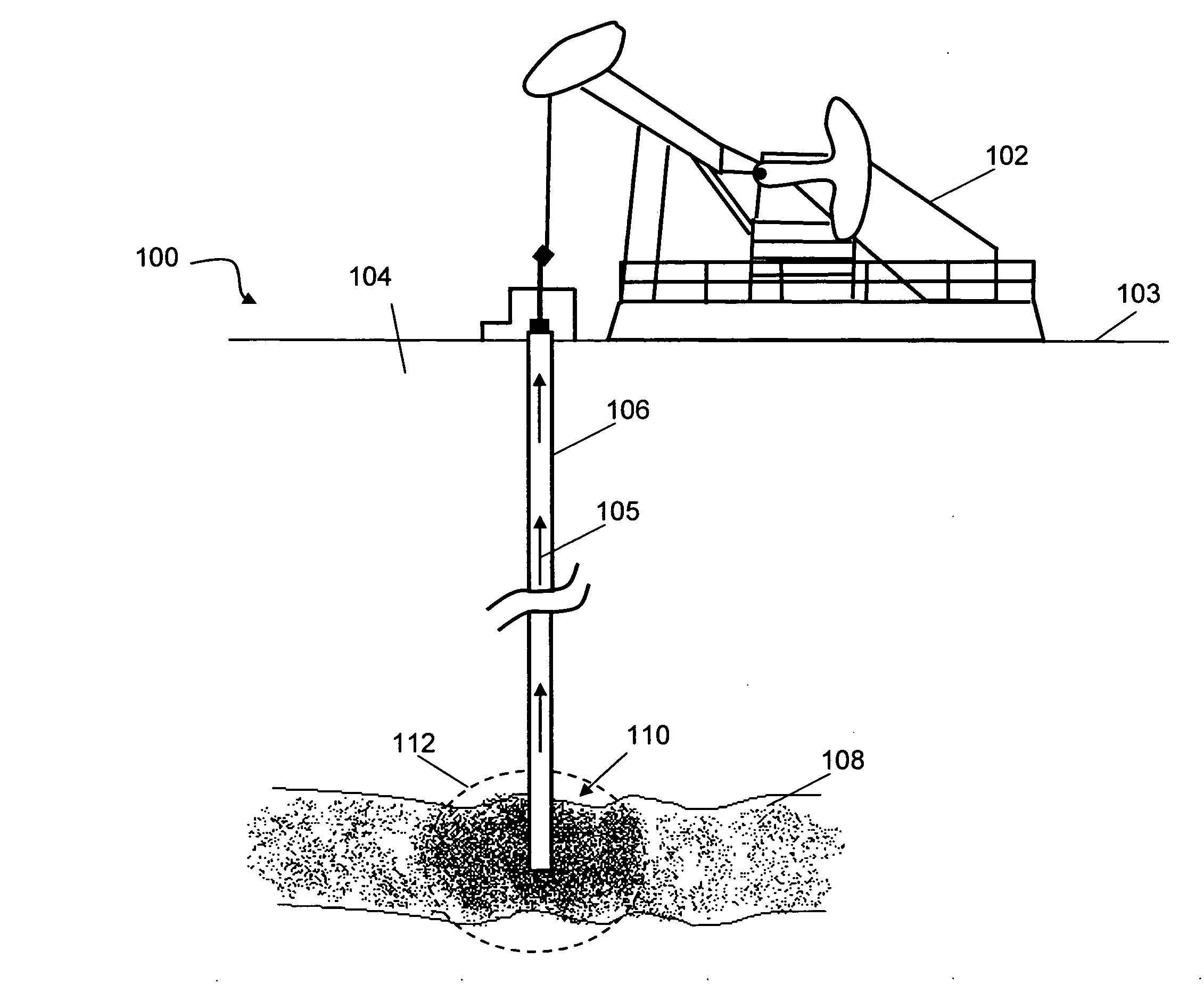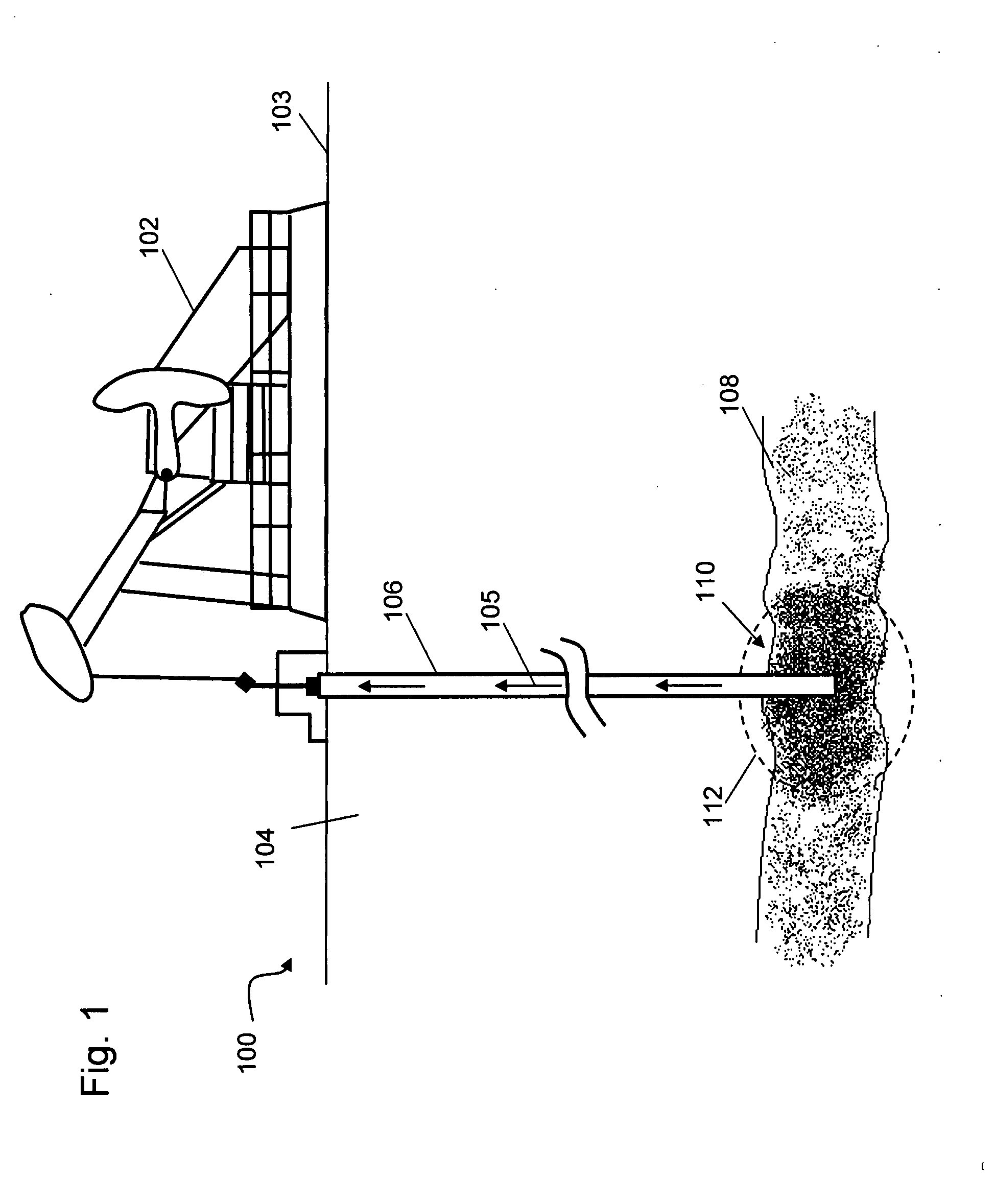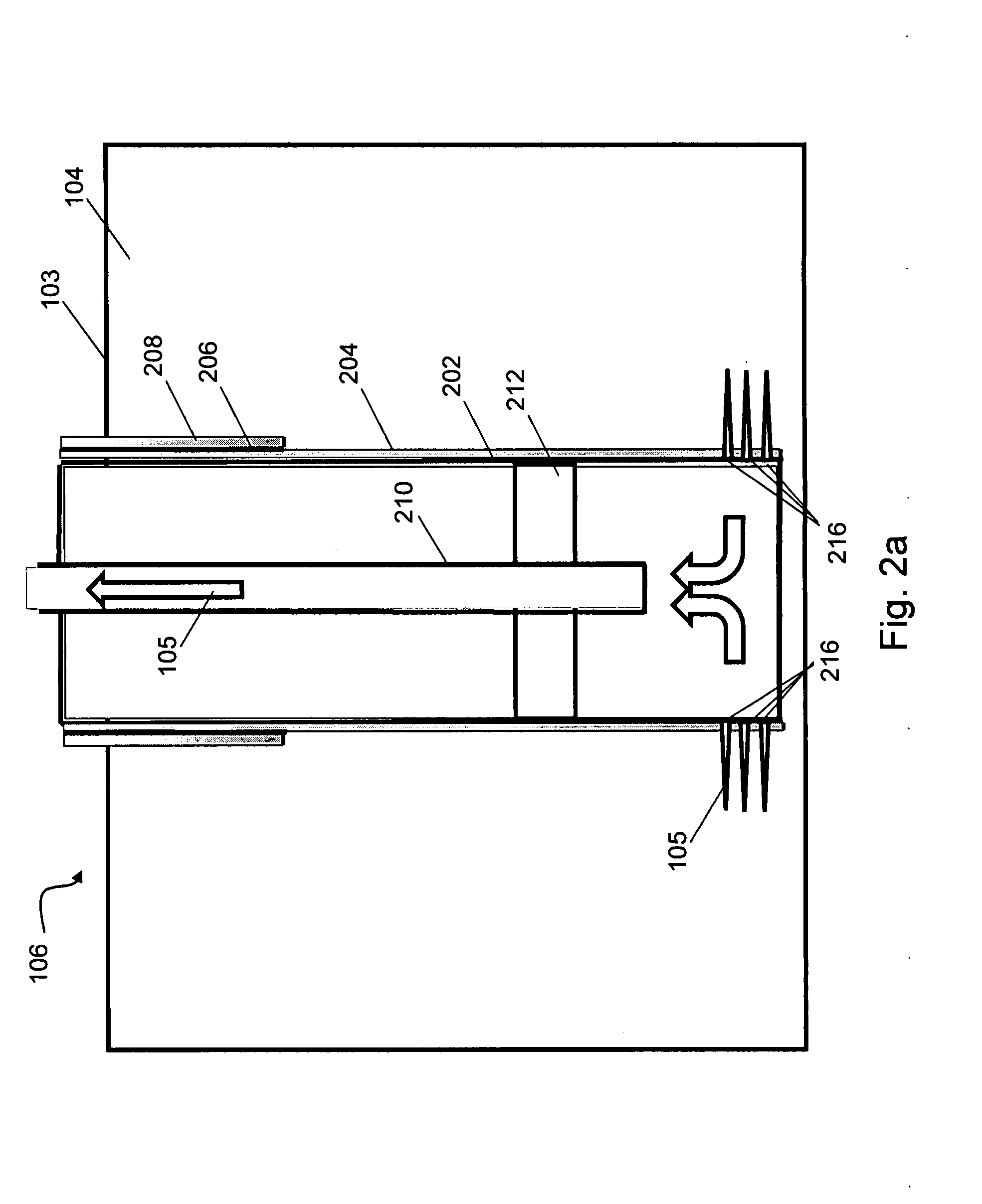System and method for reducing resistance to flow in liquid reservoir extraction
a liquid reservoir and flow resistance technology, applied in the direction of drilling casings, drilling pipes, borehole/well accessories, etc., can solve the problems of not being able to extract the most of the oil from the ground, the oil reservoir begins to lose pressure, and the oil is actually a lot of oil left in the reservoir, so as to increase the oil flow into the well and reduce the oil flow
- Summary
- Abstract
- Description
- Claims
- Application Information
AI Technical Summary
Benefits of technology
Problems solved by technology
Method used
Image
Examples
Embodiment Construction
[0051]The present invention will now be described more fully in detail with reference to the accompanying drawings, in which the preferred embodiments of the invention are shown. This invention should not, however, be construed as limited to the embodiments set forth herein; rather, they are provided so that this disclosure will be thorough and complete and will fully convey the scope of the invention to those skilled in the art. Like numbers refer to like elements throughout.
[0052]The present invention provides a system and method for reducing resistance to flow in liquid reservoir extraction. The description of the invention provided herein is in relation to oil reservoir extraction; however, one skilled in the art will recognize that the invention can be used for other types of liquid reservoir extraction.
[0053]Referring to FIG. 1, an oil extraction process 100 is depicted where a pumping apparatus 102 located on the surface 103 of ground 104 pumps oil 105 out of an oil well 106 ...
PUM
 Login to View More
Login to View More Abstract
Description
Claims
Application Information
 Login to View More
Login to View More - R&D
- Intellectual Property
- Life Sciences
- Materials
- Tech Scout
- Unparalleled Data Quality
- Higher Quality Content
- 60% Fewer Hallucinations
Browse by: Latest US Patents, China's latest patents, Technical Efficacy Thesaurus, Application Domain, Technology Topic, Popular Technical Reports.
© 2025 PatSnap. All rights reserved.Legal|Privacy policy|Modern Slavery Act Transparency Statement|Sitemap|About US| Contact US: help@patsnap.com



